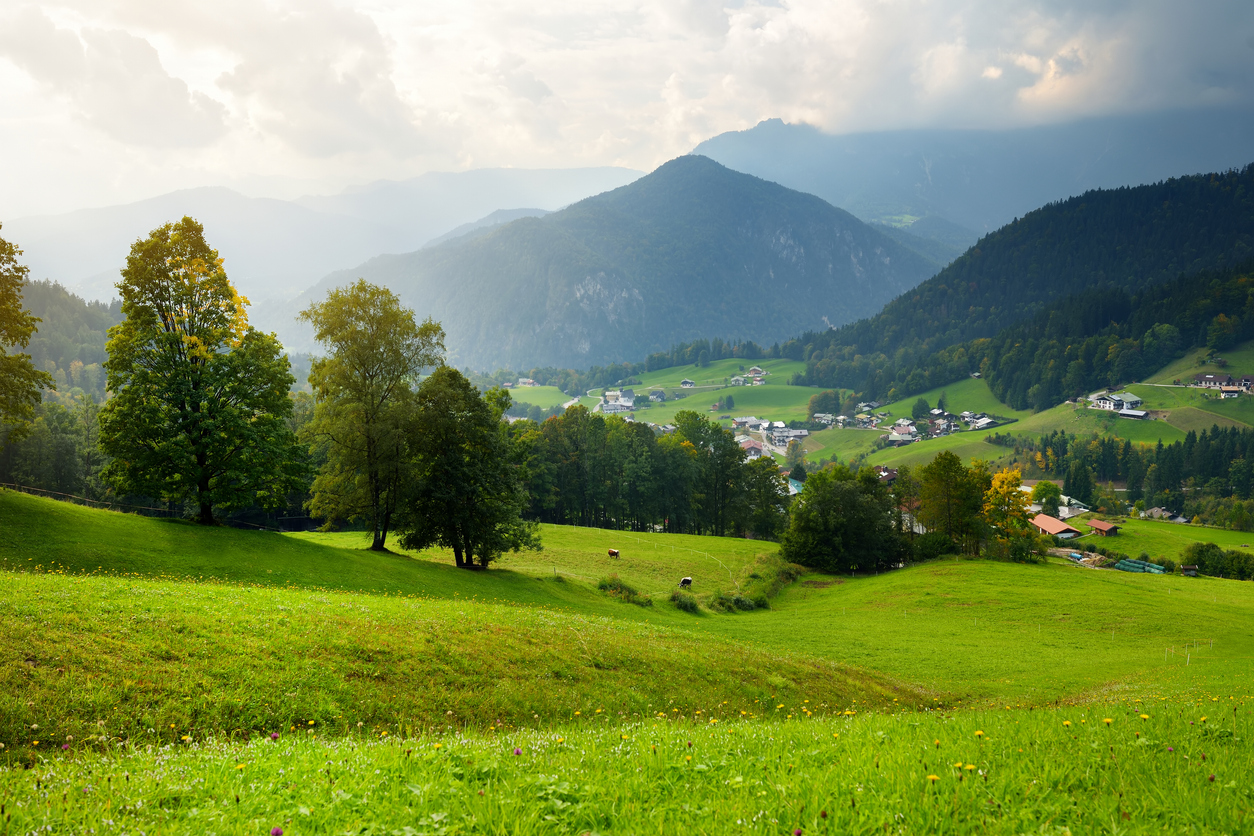
Europe is no stranger to tourism. From the canals of Venice to the lavender fields of Provence, much of the continent has been thoroughly discovered, photographed, and posted. But beyond the popular destinations lies another Europe—quiet, authentic, and often overlooked. Tucked between the mountains, along forgotten coastlines, or hidden in rolling farmland are villages that haven’t yet made it to the glossy travel brochures. These places offer not just beauty, but a slower pace, deeper cultural roots, and the feeling that you’ve stumbled onto something truly special.
Here are some of the most enchanting hidden European villages you should explore—before the crowds catch on.
1. Giethoorn, Netherlands
Known as the “Venice of the North,” Giethoorn offers all the charm of Italy’s famous city, minus the hordes of tourists. This car-free village is built around a network of canals, with picturesque footbridges and thatched-roof farmhouses dating back to the 18th century. Boats are the main mode of transport here, and the silence is striking. It’s the kind of place where time feels like it’s standing still.
Visit during spring or fall to avoid local holiday traffic. Rent a whisper boat (an electric-powered, noise-free boat) and glide through the canals surrounded by blooming flowers and charming homes.
2. Albarracín, Spain
Perched on a rocky hilltop in the region of Aragón, Albarracín looks like a scene from a medieval storybook. With its dusty pink buildings, winding cobblestone streets, and ancient city walls, it’s hard to believe this town hasn’t been completely overtaken by tourism. Yet it remains one of Spain’s best-kept secrets.
Stroll along its defensive walls, explore the 10th-century castle, and enjoy the regional cuisine, including hearty stews and local jamón. You’ll find few souvenir shops here, just quiet authenticity and panoramic views.
3. Ronda, Bulgaria
Not to be confused with its Spanish namesake, Ronda in Bulgaria is an isolated mountain village in the Rhodope range. Traditional stone houses with wooden balconies line the steep streets, and the local population still practices age-old crafts like pottery and weaving.
Few English-speaking tourists make it here, which makes it ideal for those looking for a more immersive cultural experience. The region is also known for its stunning natural beauty—deep gorges, thick forests, and winding hiking trails.
4. Civita di Bagnoregio, Italy
Nicknamed “The Dying City,” Civita di Bagnoregio sits precariously on a hilltop in central Italy, reachable only by a narrow footbridge. It has been slowly eroding for centuries, which gives it a dramatic, otherworldly appearance. The population is tiny—only a handful of residents remain—but the village is incredibly well preserved.
Expect stone alleyways, panoramic terraces, and almost complete silence. Though its popularity is starting to grow, visiting early in the morning or off-season still offers a tranquil experience.
5. Tellaro, Italy
While the Cinque Terre steals the spotlight on Italy’s Ligurian coast, Tellaro remains quietly tucked away, just south of La Spezia. This fishing village, with its pastel buildings and sloping cliffs, feels like a secret escape from the better-known towns nearby.
The local rhythm is slow and relaxed. Sip espresso in a seaside café, watch fishermen pull in their nets, and walk the narrow alleys that seem to tumble into the sea. Tellaro offers coastal Italy at its most peaceful.
6. Lavenham, England
Lavenham isn’t exactly unknown, but it’s rarely on international tourist itineraries—which is surprising, given how striking it is. Located in Suffolk, this village is famous for its half-timbered medieval houses that lean at odd angles, giving the place a slightly surreal appearance.
It’s one of England’s best-preserved medieval towns, and walking through it feels like time travel. Grab a pint in a centuries-old pub or visit local craft shops that have remained family-run for generations.
7. Koprivnik, Slovenia
Slovenia often gets overlooked in favor of neighboring Italy or Croatia, but it’s a goldmine for those seeking untouched villages. Koprivnik, tucked in the hills of the Kočevje region, is a peaceful settlement that offers traditional Slovenian architecture, dense forests, and abundant wildlife.
It’s ideal for eco-travelers and hikers, with trails that pass by crystal-clear streams and serene lakes. Despite its remote feel, Koprivnik is only a short drive from Ljubljana, making it easy to reach for a weekend escape.
8. Hallstatt, Austria (But Visit in Winter)
Yes, Hallstatt is technically not “hidden”—its stunning lakeside setting has made it one of Austria’s most photographed locations. But here’s the trick: most tourists come in summer. If you visit in winter, especially midweek, you’ll find an entirely different place—quiet, magical, and blanketed in snow.
With frozen waterfalls, twinkling lights, and near-empty streets, winter transforms Hallstatt into a true alpine wonderland. It’s like having a famous masterpiece all to yourself.
9. Eguisheim, France
This tiny Alsatian village seems almost too perfect to be real. With its concentric layout, pastel houses adorned with flowers, and winding medieval streets, Eguisheim is like a fairy tale brought to life.
It’s part of the Alsace wine route, so there’s no shortage of excellent local wines to sample. Though nearby Colmar has grown in popularity, Eguisheim still flies under the radar for most travelers.
10. Piódão, Portugal
In central Portugal, nestled in the Serra do Açor mountains, lies Piódão—a village made almost entirely of schist stone. The contrast of the dark stone buildings with blue-painted doors and windows gives it a distinctive charm. Surrounded by terraced hills and forested slopes, it feels completely removed from modern life.
The drive to get here is a bit winding, but the payoff is more than worth it. Visit during the week, and you may have the whole village to yourself.
Why These Places Matter
In an age of over-tourism and cookie-cutter travel experiences, discovering these lesser-known villages is more than just a novelty—it’s a way to travel more thoughtfully. These places remind us of a Europe before it became curated for mass tourism. You’ll meet people who still live in the homes their grandparents built. You’ll eat food made from recipes passed down through generations. And most importantly, you’ll experience a sense of place that hasn’t been diluted by commercial tourism.
Practical Advice for Visiting Hidden Villages
- Travel off-season: These villages are best experienced when they’re quiet. Avoid weekends and major holidays if possible.
- Stay locally: Choose guesthouses or locally run B&Bs over chain hotels. It puts money back into the community and usually offers a more personal experience.
- Rent a car: Many of these locations aren’t accessible by public transport. A small rental car opens up countless opportunities.
- Learn a few phrases: Even a basic “hello” or “thank you” in the local language goes a long way in small communities.
- Respect local life: These are working villages, not tourist attractions. Be mindful of noise, photography, and personal boundaries.
If you’re tired of fighting for space at the Trevi Fountain or overpaying for a hotel room in Dubrovnik, take the road less traveled. The real heart of Europe is not always found in capital cities or famous landmarks. Sometimes, it’s in a quiet café in a hilltop town where no one speaks your language—but everyone still makes you feel at home.
Before these places inevitably make it to the top of travel influencers’ lists, go experience them for yourself. There’s something uniquely satisfying about discovering a place before the world does.







